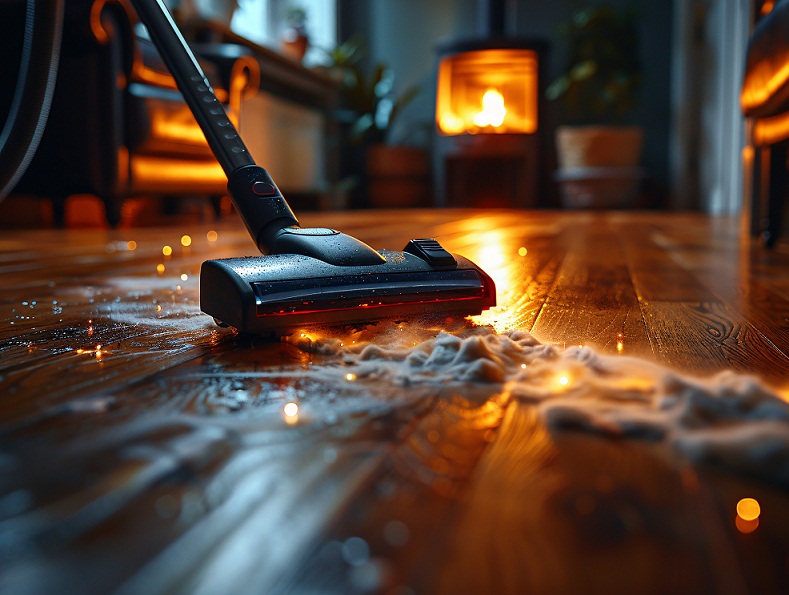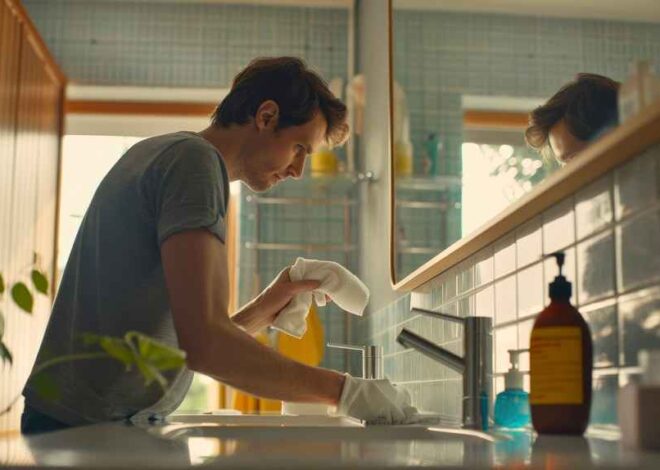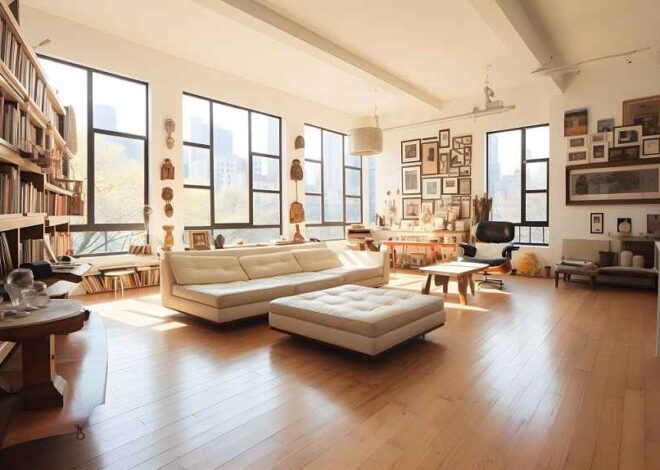
Safeguarding Your Home: Moisture Damage Prevention Flooring Strategies
Your home is your sanctuary, a place where you should feel safe and comfortable. However, one of the biggest threats to the safety and integrity of your home is moisture damage to your flooring. Whether it’s from leaks, spills, or high humidity levels, moisture can wreak havoc on your floors and lead to costly repairs. In this blog post, we’ll explore some strategies to safeguard your home against flooring damage caused by moisture. Don’t let water ruin your peace of mind – read on for tips on how to protect your floors and keep them looking beautiful for years to come!
Introduction to Moisture Damage Prevention
Picture this: you’ve just invested in beautiful flooring for your home, only to find it damaged by moisture. It’s a homeowner’s nightmare! Moisture damage can wreak havoc on your floors, leading to costly repairs and headaches. But fear not – with the right strategies in place, you can safeguard your home from moisture damage and keep your floors looking fabulous for years to come. Let’s dive into some key tips and tricks for preventing moisture damage on your flooring!
Common Causes of Moisture Damage on Flooring
Moisture damage on flooring can be a real headache for homeowners. One of the common causes is water leaks or spills that are not promptly cleaned up. When liquids seep into the flooring material, it can lead to warping, staining, and mold growth.
Another culprit behind moisture damage is poor ventilation in areas like bathrooms or basements. Without proper airflow, humidity levels can rise, creating the perfect environment for moisture-related issues to occur.
High levels of humidity in the air can also contribute to moisture damage on flooring surfaces. This excess moisture can penetrate through cracks or gaps in the floor, causing swelling and deterioration over time.
Moreover, using inappropriate cleaning products or methods that involve excessive water usage can further exacerbate moisture problems on your floors. It’s essential to follow manufacturer recommendations for cleaning and maintenance to prevent such issues from arising.
Inadequate sealing or lack of protective coatings on flooring materials leaves them vulnerable to water penetration and subsequent damage. Ensuring that your floors are properly sealed with suitable products can help mitigate the risk of moisture-related harm in your home.
Signs of Moisture Damage on Flooring
Have you ever noticed warped or buckling floorboards in your home? These could be signs of moisture damage creeping into your flooring. Moisture-related issues can manifest in various ways, such as discolored spots, mold growth, or a musty odor lingering in the air.
Another common indicator of moisture damage is the presence of water stains or soft spots on your floors. If you start to see these signs, it’s essential to address them promptly to prevent further deterioration and potential health hazards.
Peeling or bubbling floor finishes are also red flags that moisture may have infiltrated your flooring material. Keep an eye out for any changes in texture or appearance on your floors as they might signal underlying moisture problems.
If you detect any of these warning signs, it’s crucial to investigate the root cause and take necessary steps to repair and safeguard your flooring against future moisture damage.
Strategies for Preventing Moisture Damage on Flooring:
Moisture damage can wreak havoc on your flooring if left unchecked. To prevent this issue, implementing effective strategies is key. One crucial strategy is ensuring proper installation techniques are followed to create a watertight seal that keeps moisture out. Regular maintenance and inspections help identify any potential issues early on before they escalate.
Using high-quality sealants and coatings can provide an extra layer of protection against moisture infiltration, especially in areas prone to water exposure like bathrooms or kitchens. Proper cleaning practices also play a significant role in preventing moisture damage by promptly addressing spills and leaks.
Monitoring humidity levels within your home is essential as excessive moisture in the air can lead to condensation on floors, causing damage over time. Choosing the right flooring materials designed to withstand high-moisture environments can significantly reduce the risk of moisture-related issues down the line.
-
Proper Installation Techniques
When it comes to safeguarding your home against moisture damage, proper installation techniques play a crucial role in ensuring the longevity and durability of your flooring.
One key aspect of proper installation is ensuring that the subfloor is clean, dry, and level before laying down any new flooring material. This helps prevent moisture from seeping through and causing damage over time.
Additionally, using quality underlayment materials can provide an extra layer of protection against moisture intrusion. Properly sealing seams and edges during installation can also help create a barrier against water infiltration.
Working with experienced professionals who understand the importance of proper installation techniques can make all the difference in protecting your floors from potential moisture damage in the long run.
Remember, investing time and effort into getting the installation right now can save you from costly repairs down the line.
You may also read (flooring selection carpet laminate vinyl)
-
Regular Maintenance and Inspections
Regular maintenance and inspections are key components in safeguarding your home against moisture damage on flooring. By staying proactive, you can catch any issues early on before they escalate into larger problems.
Make it a habit to routinely check for any signs of water leaks or seepage around sinks, toilets, and appliances that use water. Even small drips can lead to significant damage over time if left unchecked.
Inspect the grout lines in tiled areas regularly for any cracks or gaps where moisture could penetrate. Repair any damaged grout promptly to prevent water from seeping beneath the tiles.
Keep an eye out for any discoloration, warping, or buckling of flooring materials as these can be indicators of moisture damage. Addressing these issues promptly can help prevent further deterioration and costly repairs down the line.
By conducting regular maintenance checks and inspections, you can stay ahead of potential moisture damage threats and ensure the longevity of your flooring surfaces. Stay vigilant and proactive in protecting your home from unwanted moisture intrusion.
-
Using Effective Sealants and Coatings
When it comes to safeguarding your home against moisture damage, using effective sealants and coatings can be a game-changer. These products create a protective barrier that helps prevent water from seeping into your flooring material.
Choose high-quality sealants specifically designed for the type of flooring you have in each area of your home. Whether it’s hardwood, laminate, tile, or vinyl, there are sealants tailored to enhance their durability and resistance to moisture.
Before applying any sealant or coating, make sure the surface is clean and completely dry. Proper application is key to ensuring maximum effectiveness in protecting your floors from moisture-related issues.
Regularly inspect the condition of the sealants on your floors and reapply them as needed to maintain their efficacy over time. By investing in quality products and staying proactive with maintenance, you can significantly reduce the risk of moisture damage affecting your flooring.
-
Implementing Proper Cleaning Practices
When it comes to safeguarding your home against moisture damage, implementing proper cleaning practices is crucial. Regularly cleaning your floors not only keeps them looking great but also helps prevent moisture-related issues.
Start by sweeping or vacuuming the floors regularly to remove any dirt or debris that could trap moisture. Use a damp mop with a mild cleaner suitable for your flooring type to clean away any spills or stains promptly.
Avoid using excessive water when cleaning as standing water can seep into cracks and crevices, leading to potential moisture problems. For hardwood floors, consider using a specialized wood floor cleaner to maintain their finish and protect them from excess moisture.
In high-moisture areas like bathrooms or kitchens, pay extra attention to keeping the floors dry after use. Using rugs or mats in these spaces can help absorb excess water and prevent it from reaching the flooring underneath.
By incorporating proper cleaning practices into your routine, you can proactively combat moisture damage and keep your floors in top condition for years to come.
-
Monitoring Humidity Levels
Maintaining optimal humidity levels in your home is crucial in preventing moisture damage to your flooring. Fluctuations in humidity can lead to expansion and contraction of the wood, causing warping or buckling. To safeguard your floors, invest in a hygrometer to monitor indoor humidity levels regularly. Ideally, aim for a range between 30% and 50% to keep your floors stable.
During humid seasons or in high-moisture areas like bathrooms or basements, consider using dehumidifiers to reduce excess moisture in the air. This proactive approach can help prevent potential damage before it occurs. Additionally, proper ventilation plays a key role in regulating humidity levels throughout your home.
By staying vigilant and actively monitoring humidity levels, you can protect your flooring investment and enjoy long-lasting beautiful floors for years to come.
Choosing the Right Flooring Materials to Prevent Moisture Damage
When it comes to safeguarding your home against moisture damage, choosing the right flooring materials is crucial. Opting for materials that are water-resistant or waterproof can make a significant difference in preventing issues like warping, mold growth, and deterioration.
Vinyl flooring is a popular choice for high-moisture areas due to its resilience to water. It’s available in various styles and colors, making it a versatile option for both aesthetics and functionality. Additionally, ceramic or porcelain tiles are excellent choices for bathrooms and kitchens as they are highly resistant to moisture.
For those seeking a more natural look, hardwood floors treated with sealants can also offer protection against moisture damage. Engineered wood is another great alternative since it’s less prone to swelling or contracting when exposed to humidity fluctuations.
Ultimately, selecting the right flooring material tailored to your home’s specific needs can go a long way in preserving your floors from moisture-related issues.
-
Best Options for High-Moisture Areas
When it comes to safeguarding your home against moisture damage, prevention is key. By following the strategies outlined in this article and choosing the right flooring materials for high-moisture areas, you can protect your floors and preserve the beauty of your home for years to come. Remember, taking proactive steps to prevent moisture damage will not only save you time and money on repairs but also ensure a healthy living environment for you and your family. So, invest in proper installation techniques, regular maintenance, effective sealants, and coatings while keeping an eye on humidity levels to keep moisture at bay. With these tips in mind, you can enjoy durable and beautiful flooring that stands the test of time.
You may also read (hiring experienced flooring installers)


